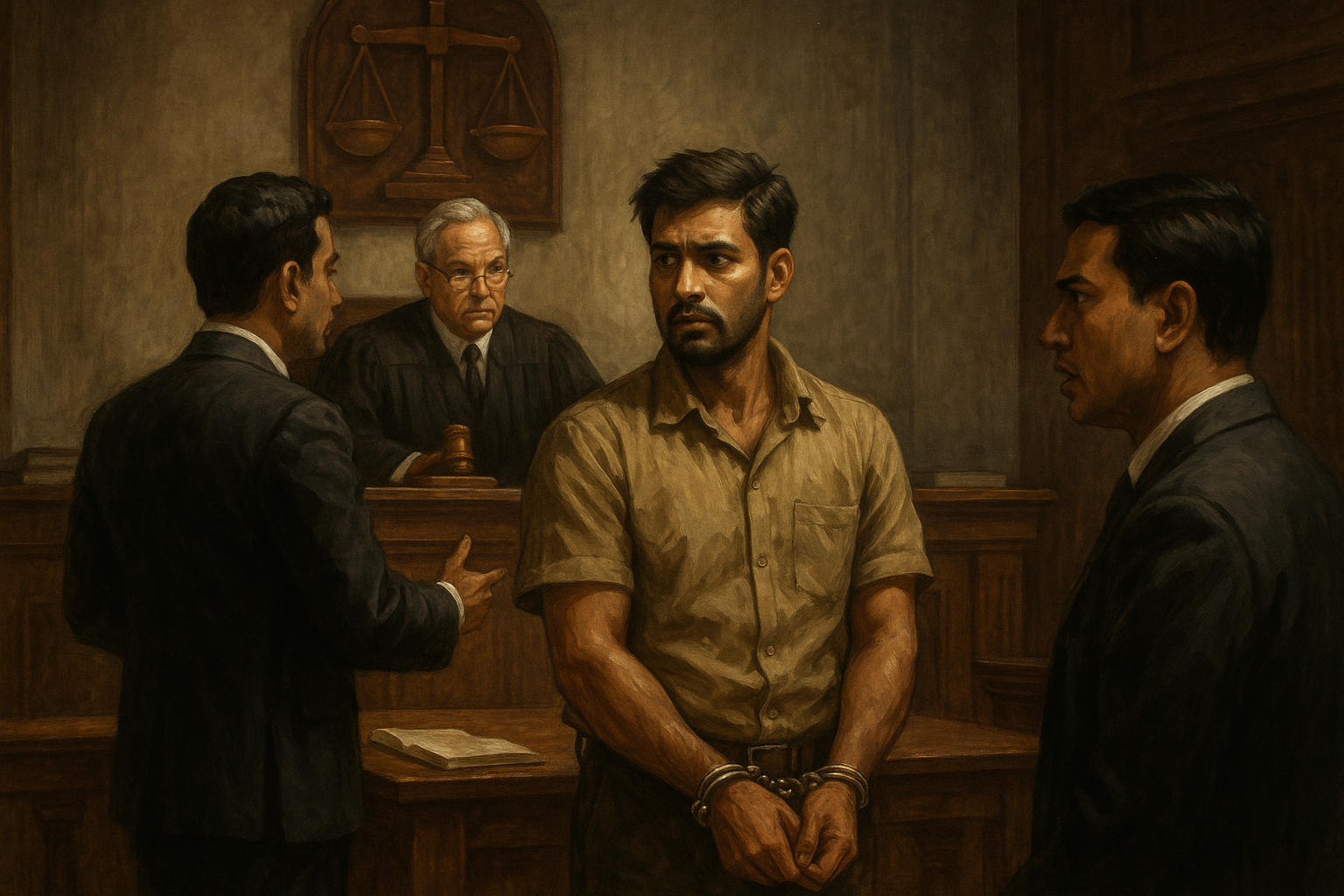In a recent judgment dated 2 December 2024, the Hon’ble Patna High Court set aside the conviction and ten-year sentence of a man who had earlier been found guilty of attempted murder, extortion, and possession of arms. The Court found several inconsistencies in the prosecution’s case, especially regarding medical evidence and the reliability of eyewitness testimony.
Simplified Explanation of the Judgment
The appellant was convicted by the Trial Court for attempting to murder a person during an alleged extortion attempt. The incident reportedly took place on 28 March 2018, when the informant and his brother were on their way to work on a motorcycle. Near a petrol pump, they were stopped by two men, including the appellant, who demanded extortion money of ₹5 lakhs. When they refused, the accused allegedly fired gunshots and threw a bomb, injuring the informant’s brother.
The police registered the case under Sections 307, 341, 387, 120B of the Indian Penal Code, Section 27 of the Arms Act, and 3/4 of the Explosive Substances Act. After the investigation, the appellant and others were charge-sheeted and put on trial.
The Trial Court convicted the appellant and sentenced him to ten years’ imprisonment under Section 307 IPC, with additional sentences for other charges. However, co-accused Ajit Kumar, alleged to be the mastermind, was acquitted due to lack of evidence supporting the conspiracy.
On appeal, the Hon’ble High Court thoroughly re-evaluated the evidence. The main point of concern was the credibility of the medical and eyewitness testimony. Although the injured witness claimed to have suffered bomb injuries to both legs, the medical report documented only a gunshot wound to the upper back. No injuries consistent with a bomb blast were found.
Moreover, the doctor initially misidentified the injured party in court. Also, the informant, though present at the scene, was not a direct eyewitness to the actual shooting or bomb attack, as he fled during the incident. This weakened the prosecution’s version significantly.
The Court also noted that the trial court had already acquitted the appellant of charges under the Explosive Substances Act and did not accept the conspiracy theory due to the acquittal of the alleged mastermind. The conviction for criminal conspiracy, therefore, became legally unsustainable.
Based on these inconsistencies, the Hon’ble Court concluded that the prosecution had failed to prove the appellant’s guilt beyond reasonable doubt. The conviction was set aside, and the appellant was ordered to be released unless required in another case.
Significance or Implication of the Judgment
This judgment reinforces the principle that criminal convictions must be based on reliable, corroborated evidence. It highlights the importance of consistency between eyewitness accounts and medical reports. The judgment also reiterates that if the alleged mastermind is acquitted and the same evidence is used against other co-accused, their conviction may not stand unless supported by independent proof.
For the general public, this case serves as a reminder that false implication or defective investigations can lead to prolonged detentions and miscarriages of justice. For the prosecution, it stresses the importance of presenting cohesive and corroborative evidence.
Legal Issue(s) Decided and the Court’s Decision
- Whether the appellant’s conviction for attempt to murder was sustainable despite inconsistencies in evidence?
- Decision: No. The Court found contradictions between medical and eyewitness testimony.
- Whether the conviction under criminal conspiracy (Section 120B IPC) was valid when the alleged mastermind was acquitted?
- Decision: No. The conspiracy charge could not be sustained without proof against the main accused.
- Whether the appellant’s act of throwing a bomb was proved?
- Decision: No. The medical evidence did not support the claim of bomb-related injuries.
- Was the seizure of weapons and materials valid and convincing?
- Decision: No. Seizure materials lacked proper markings and signatures, weakening their evidentiary value.
Judgments Referred by Parties
- Jage Ram v. State of Haryana, (2015) 11 SCC 366 – Cited by appellant to stress on the legal requirements under Section 307 IPC.
Judgments Relied Upon or Cited by Court
- State of M.P. v. Kashiram, (2009) 4 SCC 26
- Vadivelu Thevar v. State of Madras, AIR 1957 SC 614
- Nand Lal v. State of Chhattisgarh, (2023) 10 SCC 470
Case Title
Chandan Kumar vs. The State of Bihar
Case Number
Criminal Appeal (SJ) No. 4216 of 2023
Citation(s)- 2025 (1) PLJR 184
Coram and Names of Judges
Hon’ble Mr. Justice Chandra Shekhar Jha
Names of Advocates and who they appeared for
- Mr. Ramakant Sharma, Sr. Advocate (for the appellant)
- Mr. Bipin Kumar, Advocate (for the appellant)
- Ms. Sarita Kumari, Advocate (for the appellant)
- Mrs. Anita Kumari Singh, Addl. Public Prosecutor (for the State)
Link to Judgment
MjQjNDIxNiMyMDIzIzEjTg==-j4suXKtlSz4=
If you found this explanation helpful and wish to stay informed about how legal developments may affect your rights in Bihar, you may consider following Samvida Law Associates for more updates.








